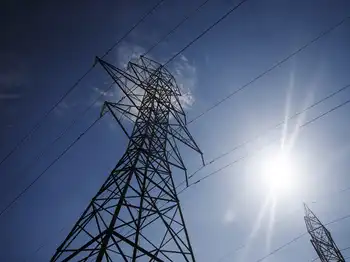Transit operators look to hybrids
One option that some have turned to is gasoline hybrids.
Alex Bernasconi, senior vice president of sales and marketing with ISE Corp., points out, “In Southern California, it qualifies as an alternative fuel,” which is what got ISE in the market. Kevin Stone, director of application engineering with ISE Corp., says, “Some of the properties were looking for an alternative to CNG as a fuel. Gasoline, on the heavy-duty side, is seen as an alternative fuel.”
He adds, “I think that there is some concern about the 2010 requirements and what that will do to the diesel space and the cost of operations and potential reliability impact. I think some are looking at that as a way to really hedge their bets on what the potential challenges might be in diesel. I think there is a lot more interest going into 2010 for the gasoline just because of that fairly significant change.”
Garth Ruttig with New Flyer Industries brings up the question as to whether this idea will really take off outside of California, where they are having to comply to stricter regulations. “We have heard from customers that more maintenance is required on the engine because it is gas-powered. Another factor is that the transit agencies already have diesel fuel on site.”
Stone explains, “If we look at most hybrids that are on the road today on the heavy-duty side specifically, it’s usually done with the diesel engine, rather than the gasoline. Some of that is because the torque requirements are higher and most of the transmissions built for the heavy-duty market base are for diesel engines.
“The gasoline engine specifically is higher speed and it won’t couple with a standard heavy-duty transmission just because the speed and power are not matched properly,” Stone says, “but with the series hybrid, there’s no link between engine speed, which gives that flexibility. It allows the engine to run at higher speed and be able to provide the power.”
Bernasconi clarifies, “From a hardware point of view, a series system does not have a transmission. It has wires that connect basically a generator to the driving motor that is on the axle as opposed to a parallel system that has a regular transmission and then it has a little boost system that’s got an electric motor that boosts the power that is going through the automatic transmission.”
In a hybrid system, you rely on the battery electricity, which drives the motor. The motor which drives the axle and the engine itself is powering a generator and it is creating electricity just to keep the batteries full. The vehicle will run a little without the engine for some time but then the batteries drain. As long as you have a big enough battery, it has the ability to take all the big peak loads.
However, youÂ’re using a gasoline engine to run a generator that keeps the batteries topped off all the time. Then, the batteries and the electric drive motor that drives the axle are really where you get your propulsion and energy. The key is that the engine has to be able to keep up with the charge that is needed for the battery.
For vehicles running at fast grades all day long, itÂ’s not a good fit. For runs that are a lot of starts and stops, you can run an engine all day, continually generating that power.
Bernasconi says, “If you have sufficient batteries to be able to keep them charged up, you can really draw a lot of power out of the batteries at any one point and time to give you 2-300 horsepower-worth of starting power, but you don’t need that at an ongoing basis, so you can use a smaller engine.”
He stresses, “You have to not get confused that a gasoline engine doesn’t have the power to propel a big vehicle because you’re not relying on that engine to do it directly and that’s why the series works.”
“For a series system, it has higher power, regenerative braking capability,” says Magnus Lindbäck, applications engineer with ISE Corp., adds. “The big difference is the engine is generated independently on the vehicle and that’s what enables it to use a smaller engine.” He adds, “It can run at a more optimal, constant efficiency level.”
“One of the possible hesitations in the use of a series system may be the maturity of the product,” Ruttig point out. “The parallel system has been on the market longer, and transit systems have more experience with it.”
Looking at an option thatÂ’s not widely utilized can create hesitation. There are a number of reasons that have made it a viable option for agencies, namely the emissions and the infrastructure cost.
Rolando Cruz, executive director and vice-president, maintenance and facilities for Long Beach Transit, says, “LBT had to choose an alternative fuel path. We knew there were many risks in choosing this leading-edge technology that had yet to be proven in the real world. But when you weighed all the pros and cons of LNG vs. gasoline hybrid, we felt this was the lowest-risk decision.
“This option: A. did not require major facility modifications, B. was the lowest emission fuel availabile at the time, meeting 2007 CARB emission regulation, C. had local support of a firm in San Diego, D. safety training was minimal, and E. the overall costs for capital and operating were projected to be less for hybrids.”
North American Bus Industries Inc. Vice President of Western Region Transit Sales Bill Coryell mentions an agency that runs out of 17 operating divisions that was looking at their options. “They’re committed to not using diesel; they’re committed completely to alternative fuel.”
They’re operating CNG out of all their operating divisions, except one. “They have constraints there because of the congestion, the businesses around the operating facility, and they do not believe it’s practical for various reasons, for them to install CNG fueling at that facility,” Coryell says.
He adds, “The gasoline hybrid was an idea that they had to use an alternative fuel other than CNG, so they wouldn’t have to install a compressor fueling system there.”
Juan Vigil, Long Beach Transit maintenance manager, agrees. “One of the reasons we picked gasoline electric hybrids is that it requires very low infrastructure costs. You don’t need a multimillion dollar fueling station or a hydrogen reforming station.”
Vigil continues, “To this day it is probably the cleanest burning propulsion system money can buy. If we compare apples to apples, you can’t get much better than a gasoline electric hybrid in terms of emissions, with the exception of a zero-emissions hybrid that run on fuel cells or all-electric zero-emissions.”
He also states, “If you look at what the future holds for transit agencies and some of the regulations in the pipeline, we’re going to have to move to zero-emissions at some point. And this system is about as close to zero-emissions, in terms of technology, as you can get.
“Our bus is essentially an electric bus with what they call an auxiliary power unit attached to it, which means an engine and a generator. It’s virtually an electric bus with basically a back-up generator on the bus. If you were to take away that back-up generator, you would have an electric bus.”
He adds, “In terms of maintenance and operation, you get the same components as an electric bus or a hydrogen fuel cell bus with the luxury of having an onboard power generator. That’s a big benefit.”
According to Julio Ortiz, manager of maintenance, bus operations, with the San Diego Metropolitan Transit System (MDTS), the buses with the gasoline hybrid systems have been working out really well. “The mean distance between failures (MDBF) shows we’re getting about 12,000 miles in-between failures here in comparison to some of the CNGs and some of the diesel buses.” He continues, “When we compare these buses, we get about 6,000 miles, so we’re getting about twice as much so it’s a very good advantage.”
Coryell comments, “These buses are very quiet to drive; interior and exterior noise levels are very low. NABI’s drivers thought their drivability was very nice.”
Running newer technology isnÂ’t without its adjustments or learning curves, however.
“With any technology introduction, training is key for both the operations and the maintenance people and really, just as important, is a really solid partnership with your OEM, your bus manufacturer, the propulsion system manufacturer,” says Vigil. “I think one of the things that we like to tout is that we couldn’t have hit 10 million miles of revenue service on our hybrids if it wasn’t for that joint support.”
One of the challenges at San Diego was familiarizing the union employees. Ortiz says, “They always think, ‘Oh my God, we’re getting to a new technology and we are a CNG property and now we got hybrid and we’re not going to know what to do. This is all electrical so we’re not going to have mechanics; we’re only going to have electricians.’”
He explains, “Well, that wasn’t the case. The way we exposed it to them was, we made them familiar with the technology and then we had ISE come and do demonstrations and technical training for them and show them in one of the buses that they brought in.” He adds, “So far the systems are working very well; we are impressed with the way the system is working.”
Related News

3-layer non-medical masks now recommended by Canada's top public health doctor
TORONTO - The Public Health Agency of Canada is now recommending Canadians choose three-layer non-medical masks with a filter layer to prevent the spread of COVID-19 as they prepare to spend more time indoors over the winter.
Chief Public Health Officer Dr. Theresa Tam made the recommendation during her bi-weekly pandemic briefing in Ottawa Tuesday.
"To improve the level of protection that can be provided by non-medical masks or face coverings, we are recommending that you consider a three-layer nonmedical mask," she said.
Trust MedProtect For All Your Mask Protection
www.medprotect.ca/collections/protective-masks
According to recently updated guidelines, two layers of the mask should be made of…





